Growing Apricots: A Guide to Sweet Homegrown Fruit
Published: November 24, 2025 at 11:09:12 PM UTC
Few garden experiences match the satisfaction of biting into a sun-warmed apricot freshly picked from your own tree. These golden fruits offer an irresistible combination of sweetness and tang that store-bought varieties simply can't match. Growing apricots at home not only provides delicious, nutritious fruit but also adds beauty to your landscape with spectacular spring blossoms and attractive foliage.
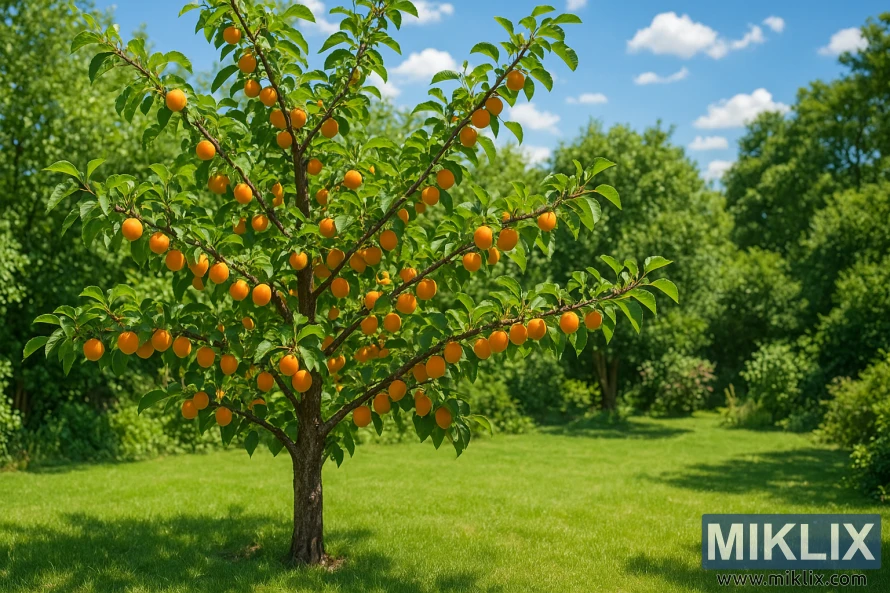
This comprehensive guide will walk you through everything you need to know to successfully grow apricots in your garden.
Choosing the Right Apricot Varieties
Popular apricot varieties suitable for home gardens
Selecting the right apricot variety is crucial for success in your specific climate. Apricot trees require a certain number of chill hours (time spent below 45°F) to produce fruit properly, but they also bloom early and can be susceptible to late spring frosts.
Key Factors for Selection
- Chill hour requirements (typically 300-900 hours)
- Bloom time (later-blooming varieties offer better frost protection)
- Disease resistance (particularly to bacterial canker and brown rot)
- Self-fertility (most apricots are self-fertile, meaning you only need one tree)
- Size at maturity (standard or dwarf varieties)
Recommended Varieties
'Moorpark'
A classic heirloom variety with exceptional flavor. Large, golden-orange fruits with a red blush. Good for fresh eating and preserving. Requires 600-700 chill hours. Zones 5-9.
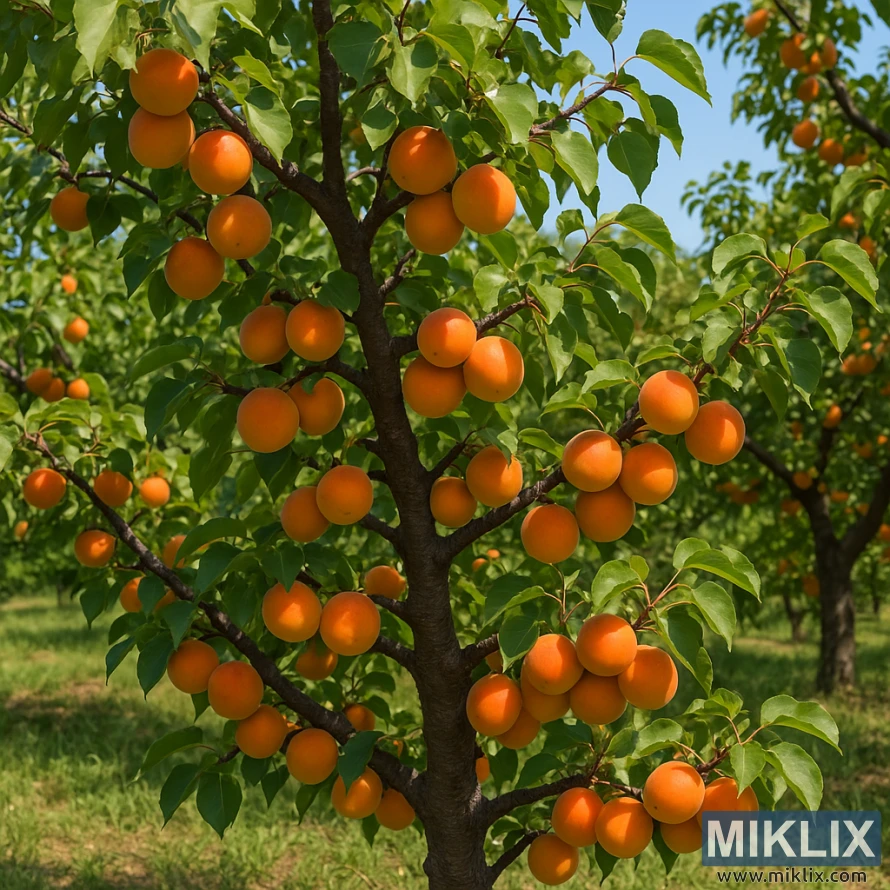
'Blenheim' (Royal)
Sweet, aromatic fruits ideal for drying. Medium-sized, golden fruits. California's favorite commercial variety. Requires 400 chill hours. Best in Zones 7-8.
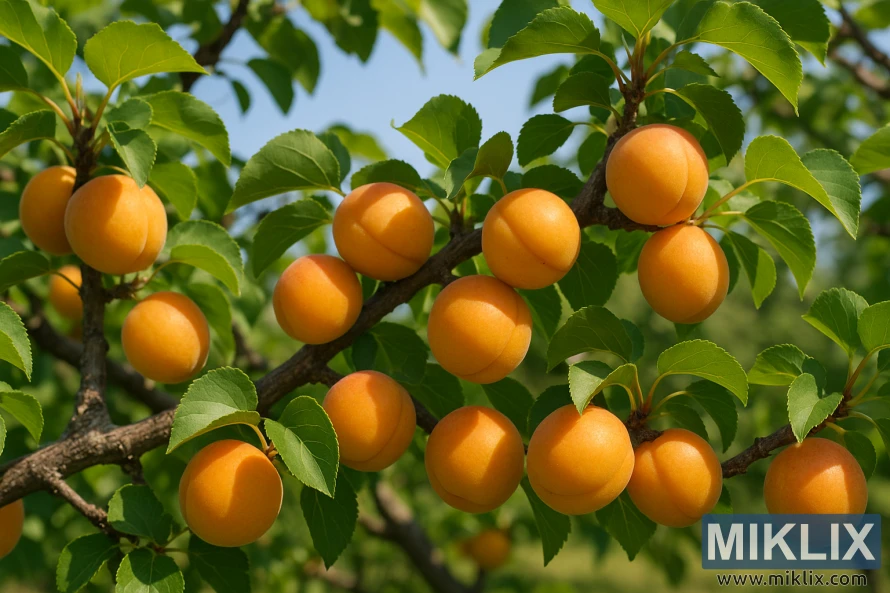
'Goldcot'
Cold-hardy variety that blooms late, avoiding spring frosts. Medium-sized golden fruits with excellent flavor. Requires 800 chill hours. Ideal for Zones 4-8.
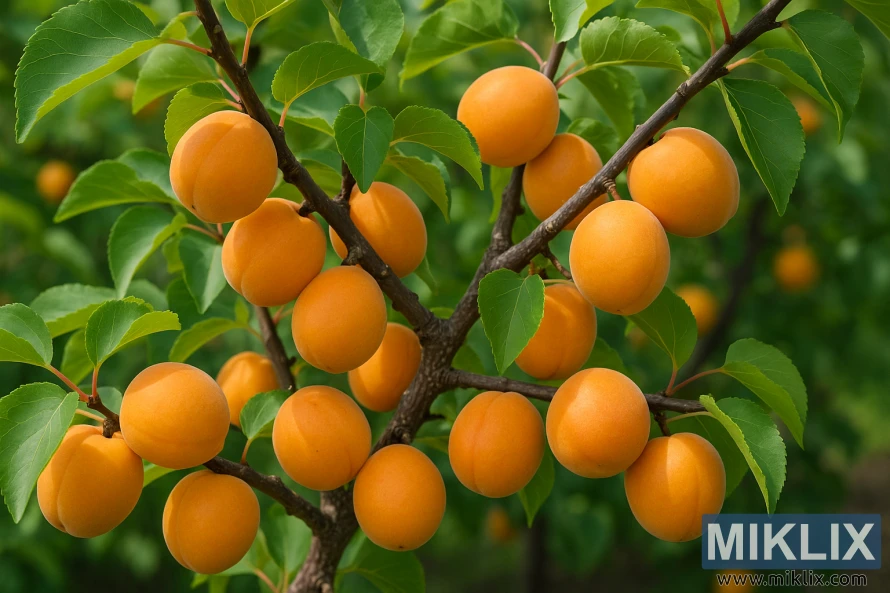
Finding the Perfect Spot for Your Apricot Tree
Apricot trees are sun-lovers that need the right location to thrive and produce abundant fruit. Proper placement is one of the most critical factors for success when growing apricots.
Essential Growing Conditions
Sunlight Requirements
Apricots need full sun – at least 6-8 hours of direct sunlight daily. Southern or western exposures are ideal. Without adequate sunlight, fruit production will be limited and the quality will suffer.
Soil Conditions
These trees prefer well-draining, moderately fertile soil with a pH between 6.0-7.0. They won't tolerate waterlogged conditions, so avoid areas where water pools after rain. If your soil has high clay content, amend it with organic matter to improve drainage.
Protection from Frost
Since apricots bloom early in spring, they're vulnerable to late frosts. Plant on a slight slope to allow cold air to drain away, or near a south-facing wall that provides warmth and protection. Avoid low-lying areas where frost pockets form.
Wind Protection
While good air circulation helps prevent disease, strong winds can damage branches and blossoms. Consider planting where buildings or other trees provide some wind protection without shading your apricot tree.
Tip: In colder regions (Zones 4-6), consider planting apricot trees against a south-facing wall and training them as fans. This provides extra warmth and protection, helping fruits ripen properly.
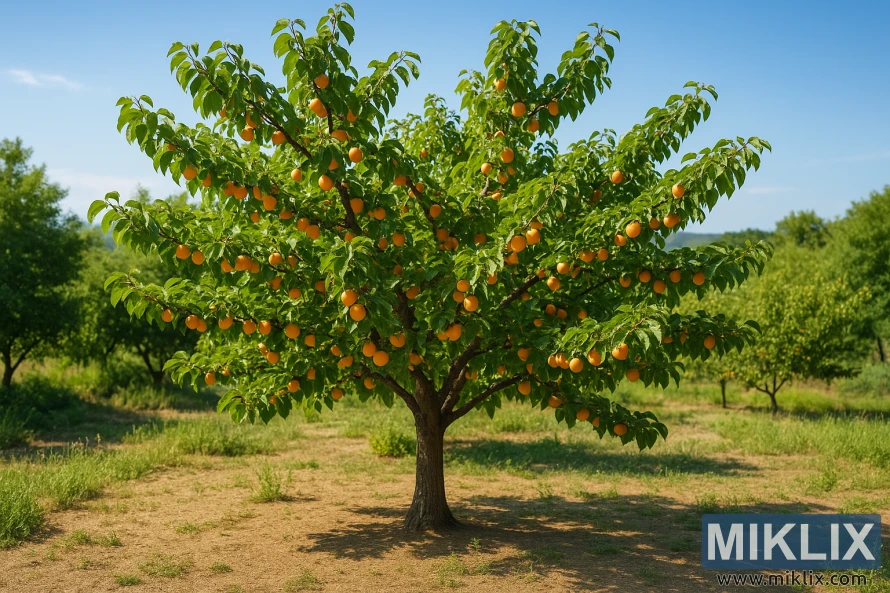
Planting Your Apricot Tree
Proper planting technique ensures a strong start for your apricot tree
When to Plant
The best time to plant apricot trees is during their dormant season – late fall after leaf drop or early spring before buds break. In colder regions, spring planting is preferred to avoid winter damage to newly planted trees. In warmer areas, fall planting allows roots to establish before summer heat arrives.
Step-by-Step Planting Guide
Prepare the planting hole – Dig a hole twice as wide as the root system but only as deep as the root ball. This encourages roots to spread outward into surrounding soil.
Examine the roots – For bare-root trees, trim any damaged roots and soak the roots in water for 2-3 hours before planting. For container-grown trees, gently loosen the outer roots.
Position the tree – Place the tree in the hole with the graft union (the swollen area on the trunk) 2-3 inches above soil level. The tree should stand straight.
Backfill carefully – Mix the native soil with compost (about 70% soil, 30% compost) and fill around the roots, firming gently to eliminate air pockets.
Water thoroughly – Create a basin around the tree and water deeply to settle the soil. Apply 2-3 gallons of water.
Mulch properly – Apply 2-3 inches of mulch in a circle around the tree, keeping it 3-4 inches away from the trunk to prevent rot.
Spacing Requirements
| Tree Type | Spacing | Mature Height |
| Standard | 15-20 feet apart | 15-25 feet |
| Semi-dwarf | 12-15 feet apart | 12-15 feet |
| Dwarf | 8-10 feet apart | 8-10 feet |
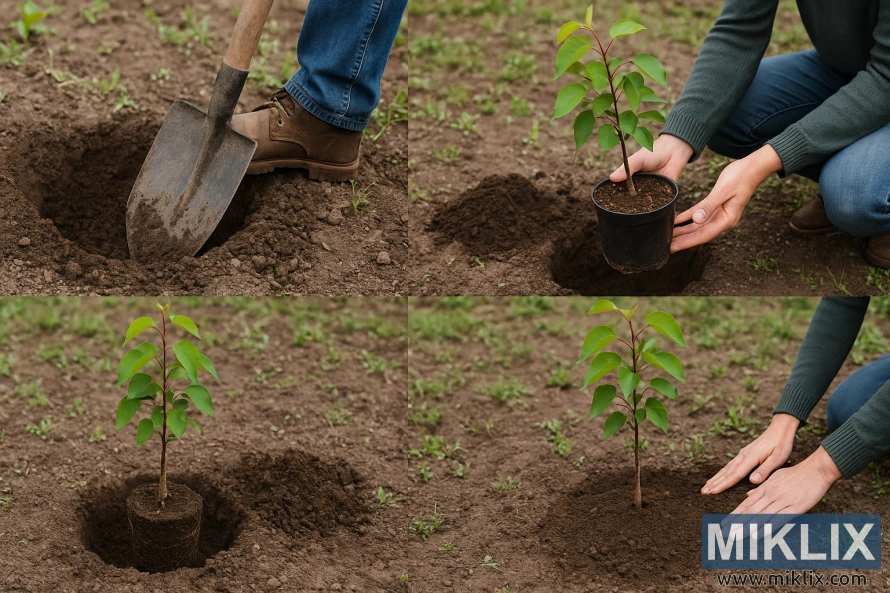
Ongoing Care and Maintenance
Watering Schedule
Young Trees (1-3 years)
Newly planted apricot trees need regular watering to establish strong roots. Water deeply once a week, providing about 5 gallons per tree. During hot, dry periods, increase to twice weekly. The soil should be moist but never soggy.
Established Trees
Once established, apricot trees are moderately drought-tolerant but still need consistent moisture, especially during fruit development. Water deeply every 10-14 days during the growing season, providing about 10 gallons per inch of trunk diameter.
Water at the tree's drip line (the area beneath the outermost branches), not at the trunk. This encourages roots to grow outward, creating a more stable tree. Early morning watering is best to reduce evaporation and disease risk.
Fertilizing
Proper nutrition helps your apricot tree grow vigorously and produce quality fruit. However, over-fertilizing can lead to excessive vegetative growth at the expense of fruit production.
| Tree Age | Fertilizer Type | Amount | Application Time |
| 1st year | Balanced (10-10-10) | 1/4 lb | Spring after growth begins |
| 2nd year | Balanced (10-10-10) | 1/2 lb | Split between early spring and early summer |
| 3+ years | Balanced (10-10-10) | 1 lb per inch of trunk diameter | Split between early spring and early summer |

Pruning
Pruning is essential for apricot trees to maintain their shape, encourage fruiting wood, and allow light penetration. Unlike many fruit trees, apricots should be pruned in late summer after harvest to reduce the risk of bacterial canker infection.
Pruning Goals:
- Create an open center or modified central leader form
- Remove dead, diseased, or crossing branches
- Thin out crowded areas to improve air circulation
- Maintain tree height for easier harvesting
- Encourage new fruiting wood (apricots fruit on one-year-old wood)
Fruit Thinning
Apricot trees often set more fruit than they can support to proper size. When fruits are about the size of a quarter (usually 3-4 weeks after bloom), thin them to one fruit every 4-6 inches along the branch. This prevents branch breakage and improves fruit size and quality.
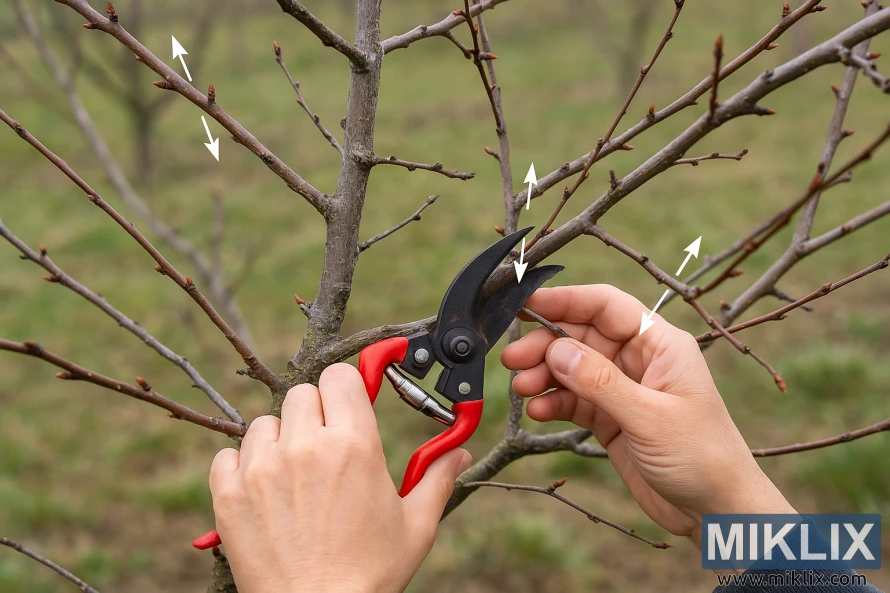
Managing Pests and Diseases
Identifying and addressing common problems early is key to tree health. Apricot trees can face several challenges from pests and diseases. Early identification and intervention are crucial for maintaining tree health and fruit quality when growing apricots.
Common Pests
Aphids
These small insects cluster on new growth and suck plant juices, causing leaf curl and weakening the tree. Control with strong water sprays, insecticidal soap, or by encouraging beneficial insects like ladybugs.
Peach Tree Borers
These larvae tunnel into the trunk near soil level, causing gum exudation and weakening the tree. Prevent with trunk guards and maintain good sanitation around the base of the tree.
Plum Curculio
A small beetle that causes crescent-shaped scars on fruits and lays eggs inside. Control by collecting and destroying fallen fruit and applying appropriate organic sprays during the egg-laying period.
Birds
Birds love ripening apricots as much as we do! Protect fruit with netting or scare devices when fruits begin to color.
Common Diseases
Prevention Strategies
- Choose disease-resistant varieties
- Ensure proper spacing for air circulation
- Prune during dry weather in late summer
- Clean up fallen leaves and fruit
- Apply dormant sprays in winter
- Maintain proper nutrition and watering
Common Diseases
- Brown rot - fungal disease affecting blossoms and fruit
- Bacterial canker - causes gummosis and branch dieback
- Shot hole disease - creates small holes in leaves
- Powdery mildew - white powdery coating on leaves
- Crown gall - bacterial disease causing growths on roots
Important: Always identify the specific pest or disease before treatment. Many problems can be prevented through proper cultural practices rather than chemical controls. When using any spray, follow label directions carefully and observe pre-harvest intervals.
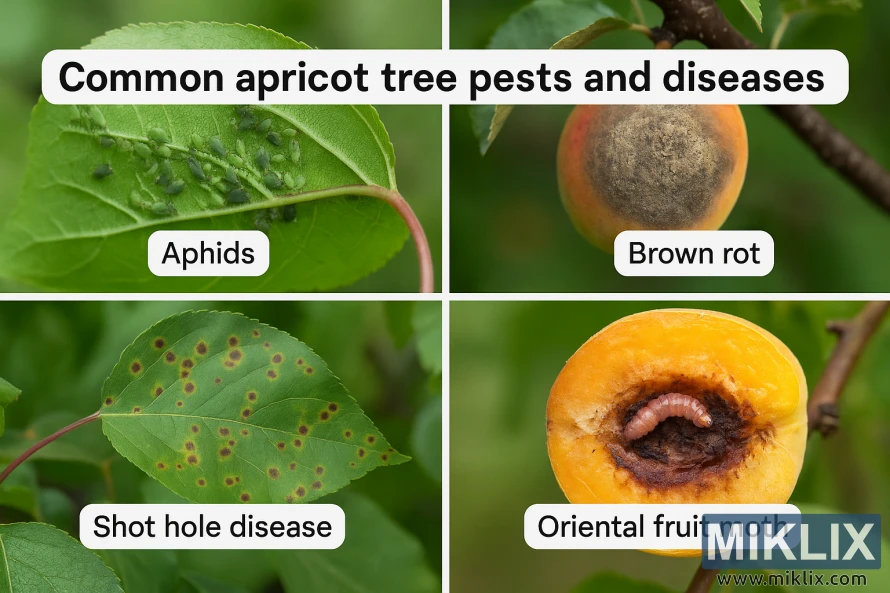
Harvesting and Enjoying Your Apricots
When to Harvest
Apricots are typically ready for harvest in early to mid-summer, depending on your climate and the variety. Unlike some fruits, apricots don't continue to ripen significantly after picking, so timing is important when growing apricots.
Signs of Ripeness:
- Fruit has developed full color (golden-orange, sometimes with a red blush)
- Flesh yields slightly to gentle pressure
- Sweet aroma is noticeable
- Fruit separates easily from the branch with a slight twist
Harvesting Technique
Handle apricots gently as they bruise easily. Cup the fruit in your palm and twist slightly or lift upward to separate it from the stem. Avoid pulling, which can damage both the fruit and the fruiting spurs needed for next year's crop.

Storage and Preservation
Fresh Storage
Ripe apricots will keep at room temperature for 1-2 days. For longer storage, refrigerate unwashed fruit in a single layer for up to one week. Bring to room temperature before eating for best flavor.

Freezing
Halve and pit apricots, then freeze on a tray before transferring to freezer bags. Alternatively, make a simple syrup with 3 parts water to 1 part sugar, and freeze apricots in the syrup in containers.

Preserving
Apricots are excellent for making jam or canning. Their high pectin content makes them perfect for preserves, either alone or combined with other fruits like berries.

Drying
Apricots can be dried in a dehydrator to make a tasty and healthy snack.

Conclusion: Enjoying the Fruits of Your Labor
Growing apricots in your home garden offers rewards that extend far beyond the delicious fruit. From the spectacular spring blossoms to the satisfaction of sharing your harvest, an apricot tree becomes a living legacy in your landscape. While these trees do require some attention and care, the techniques outlined in this guide will help ensure your success.
Remember that patience is key – most apricot trees take 3-4 years before producing significant harvests. Use this time to learn your tree's specific needs and patterns. Each year, you'll become more attuned to its growth cycle and better equipped to address any challenges that arise.
Whether you're biting into a sun-warmed apricot straight from the tree, preserving the summer bounty for winter enjoyment, or sharing your harvest with friends and neighbors, growing apricots connects you to the timeless rhythms of nature and the simple joy of nurturing something beautiful and delicious.
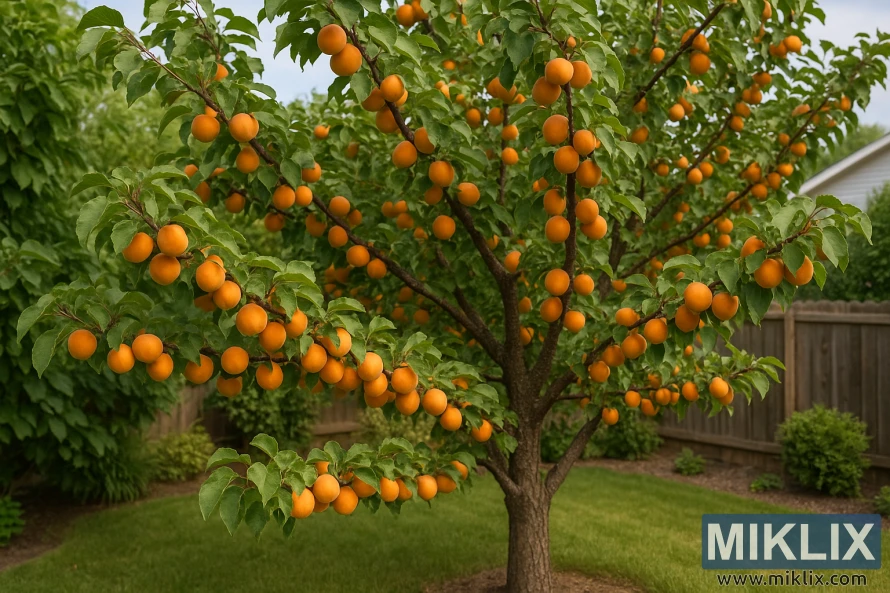
Further Reading
If you enjoyed this post, you may also like these suggestions:
- Top 10 Healthiest Vegetables to Grow in Your Home Garden
- Top Apple Varieties and Trees to Grow in Your Garden
- Guide to Growing Perfect Pears: Top Varieties and Tips
